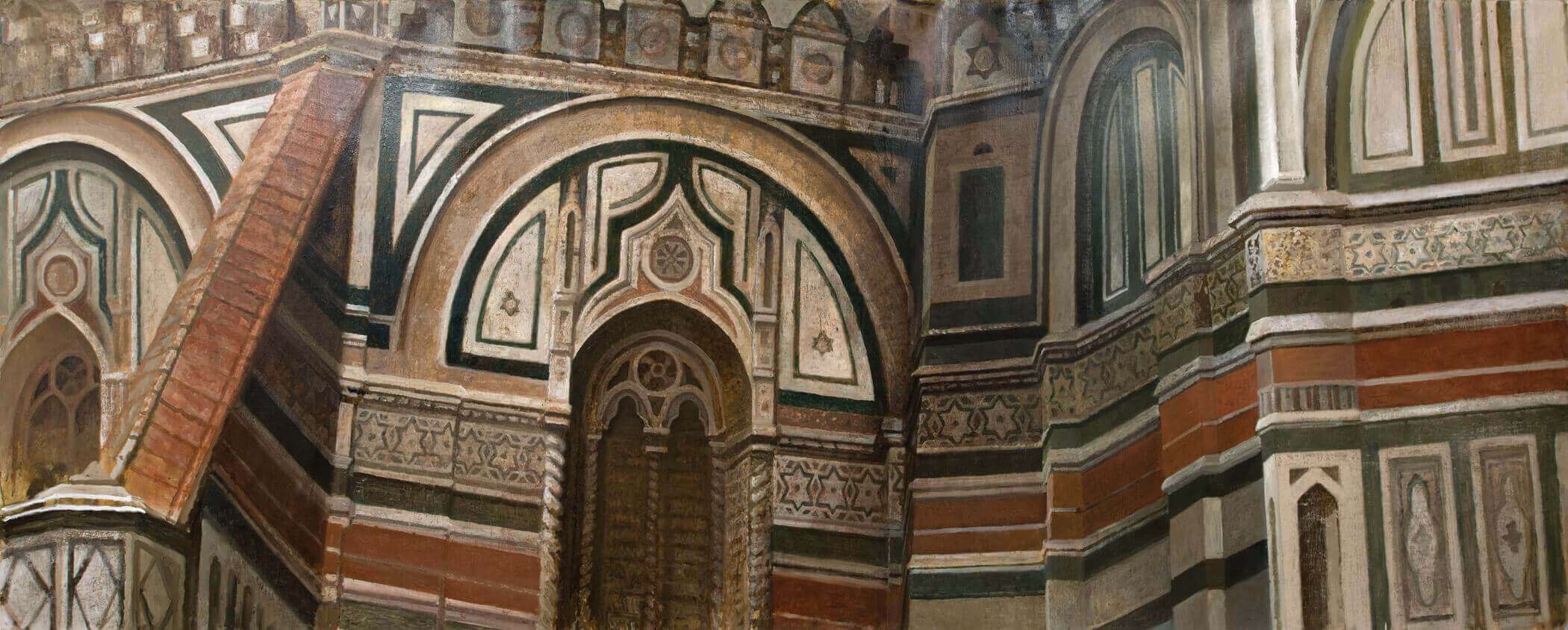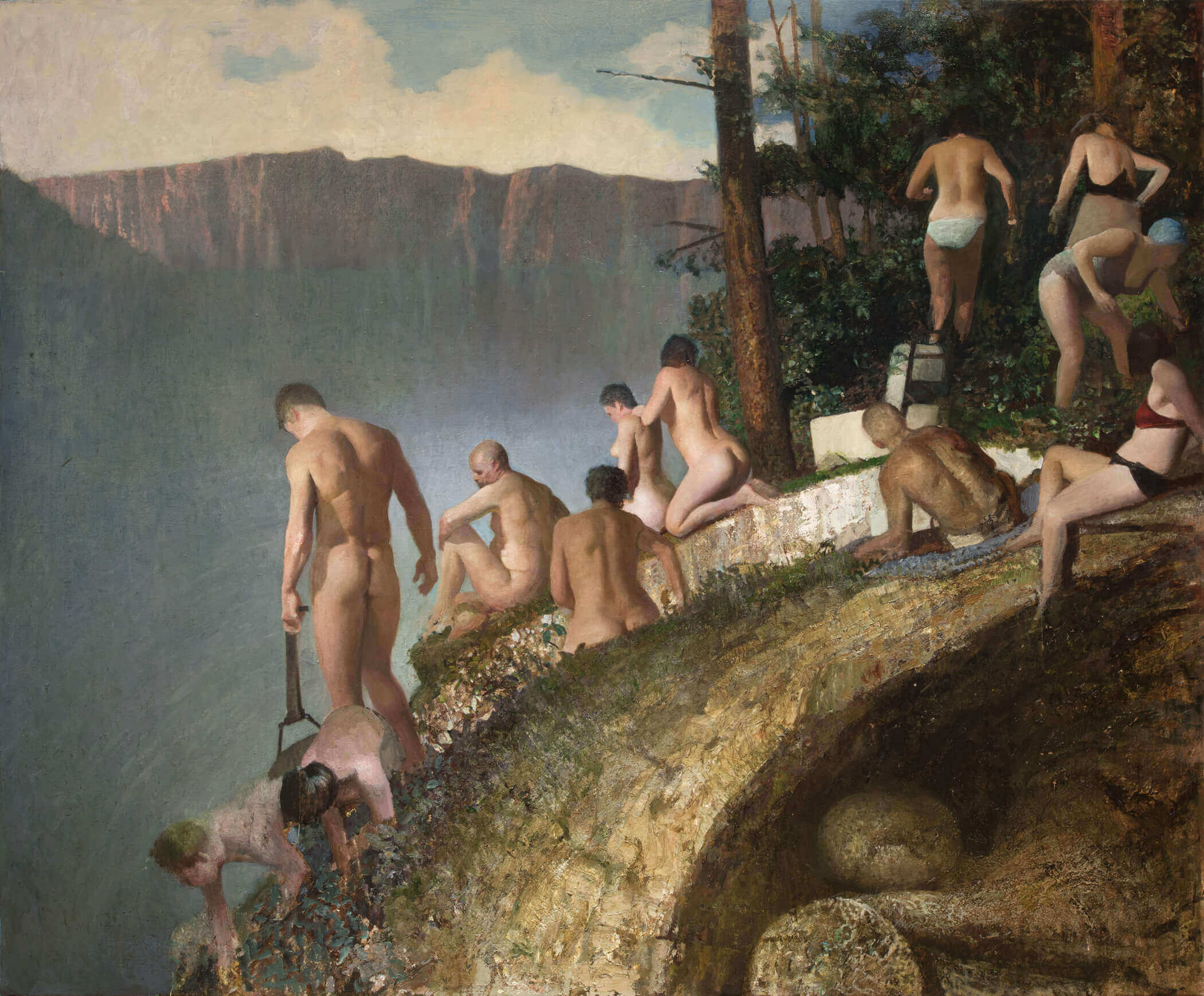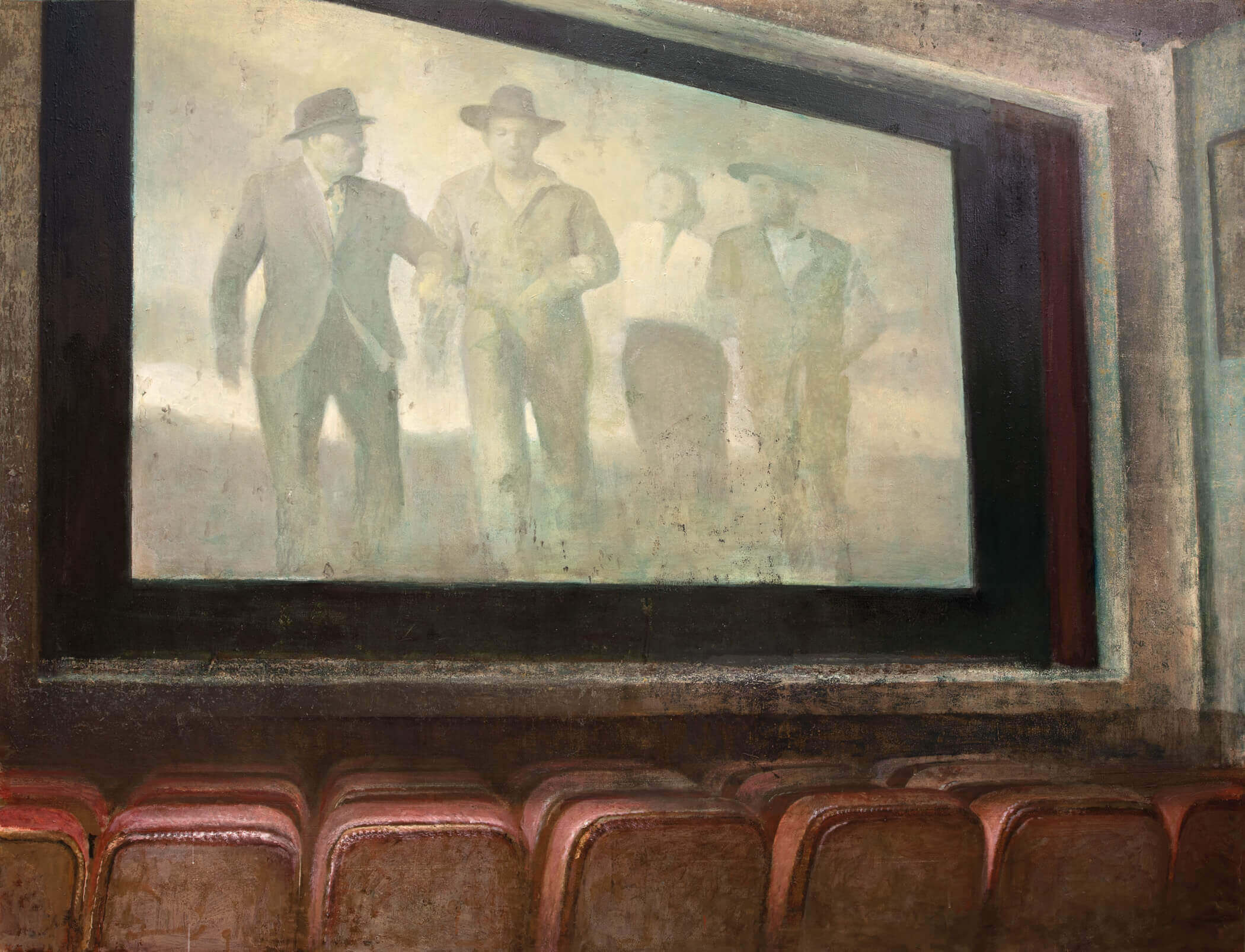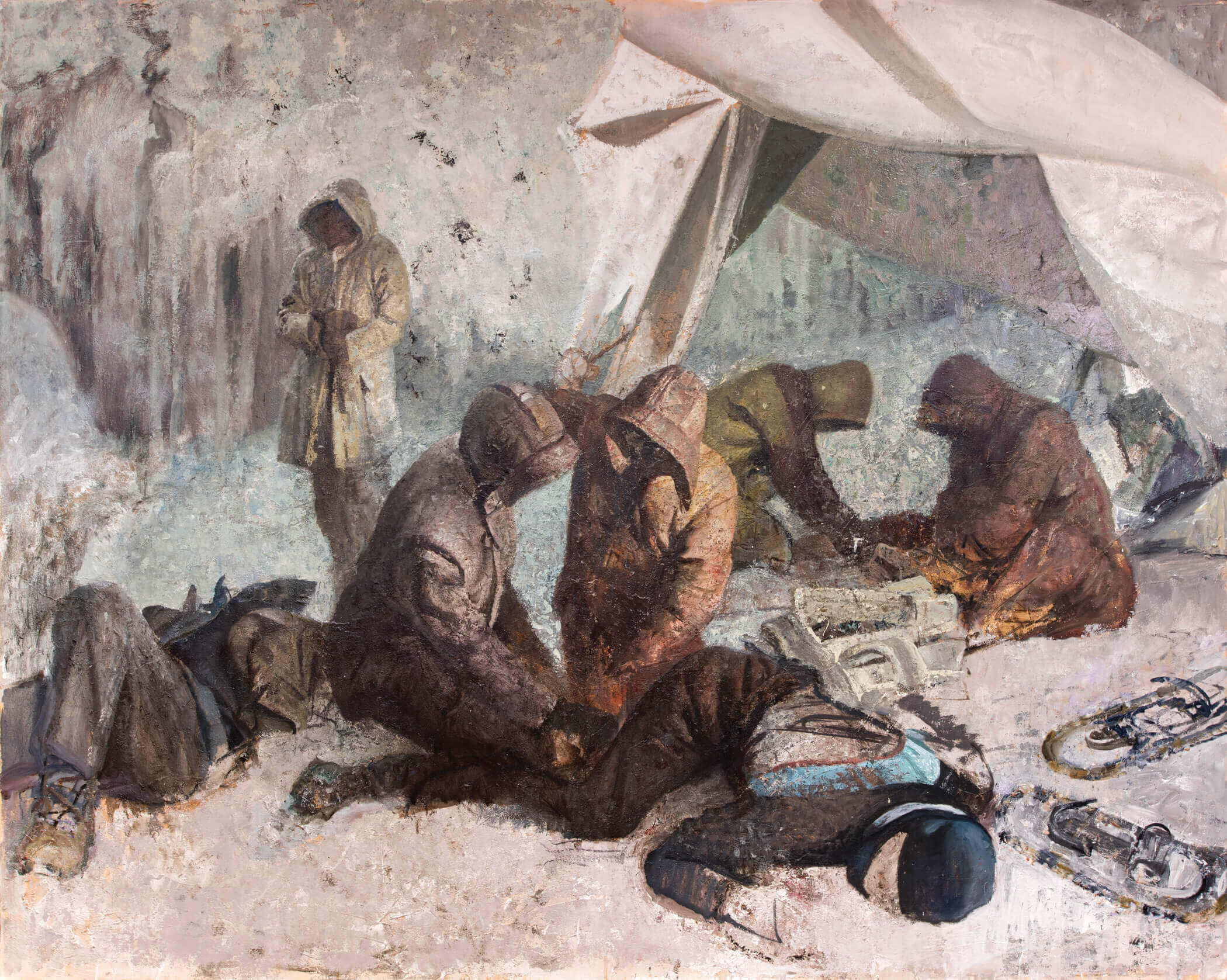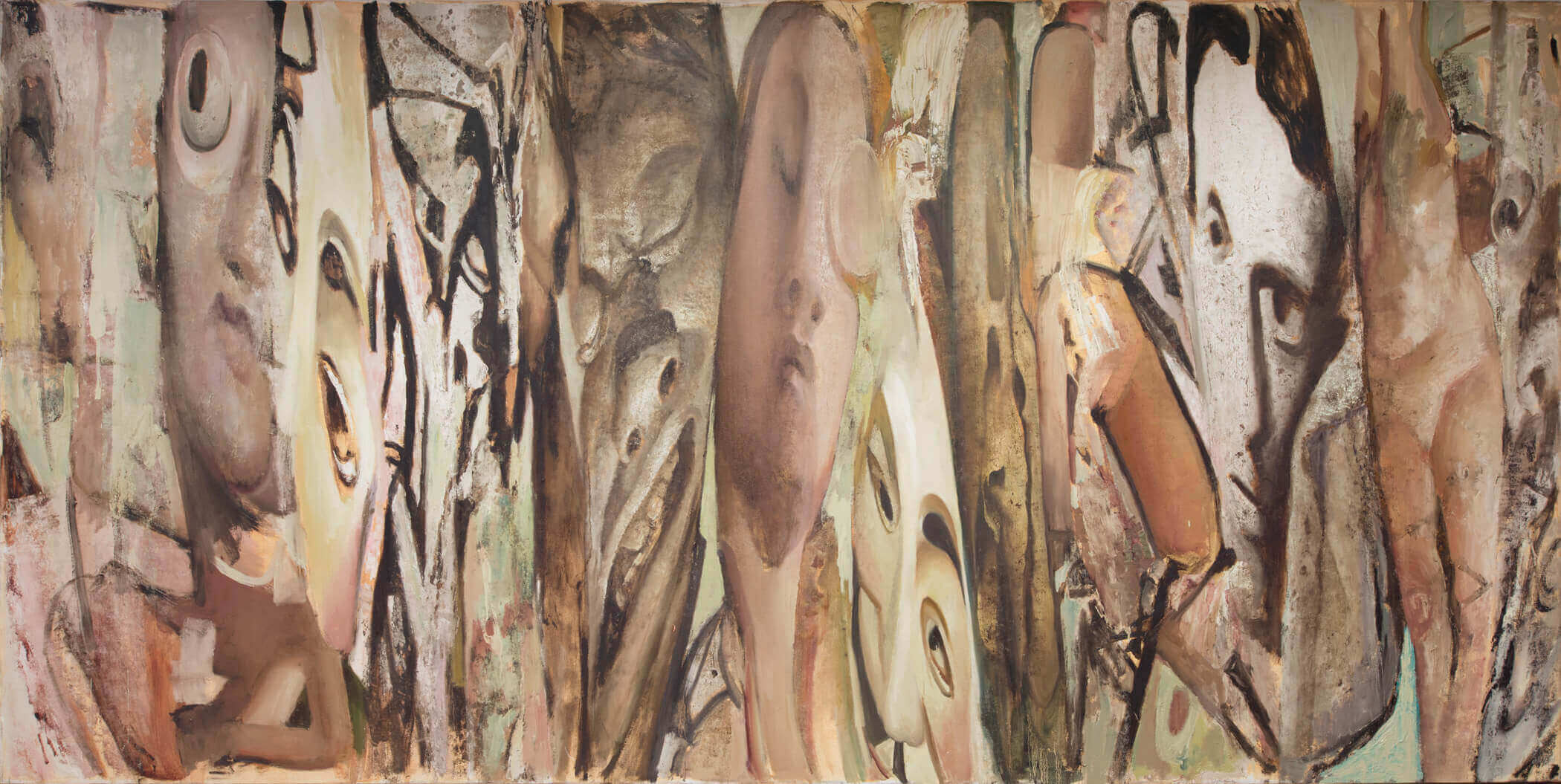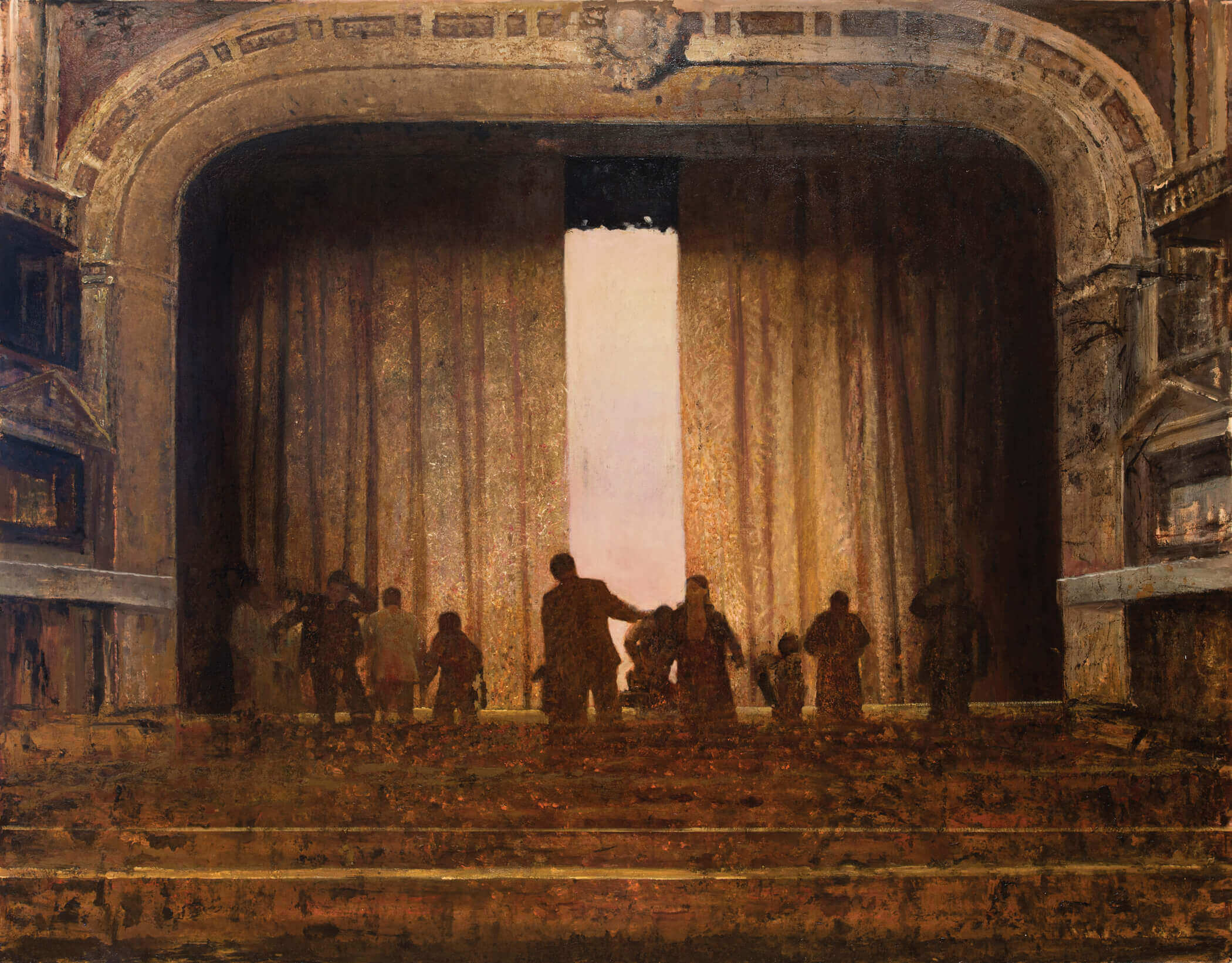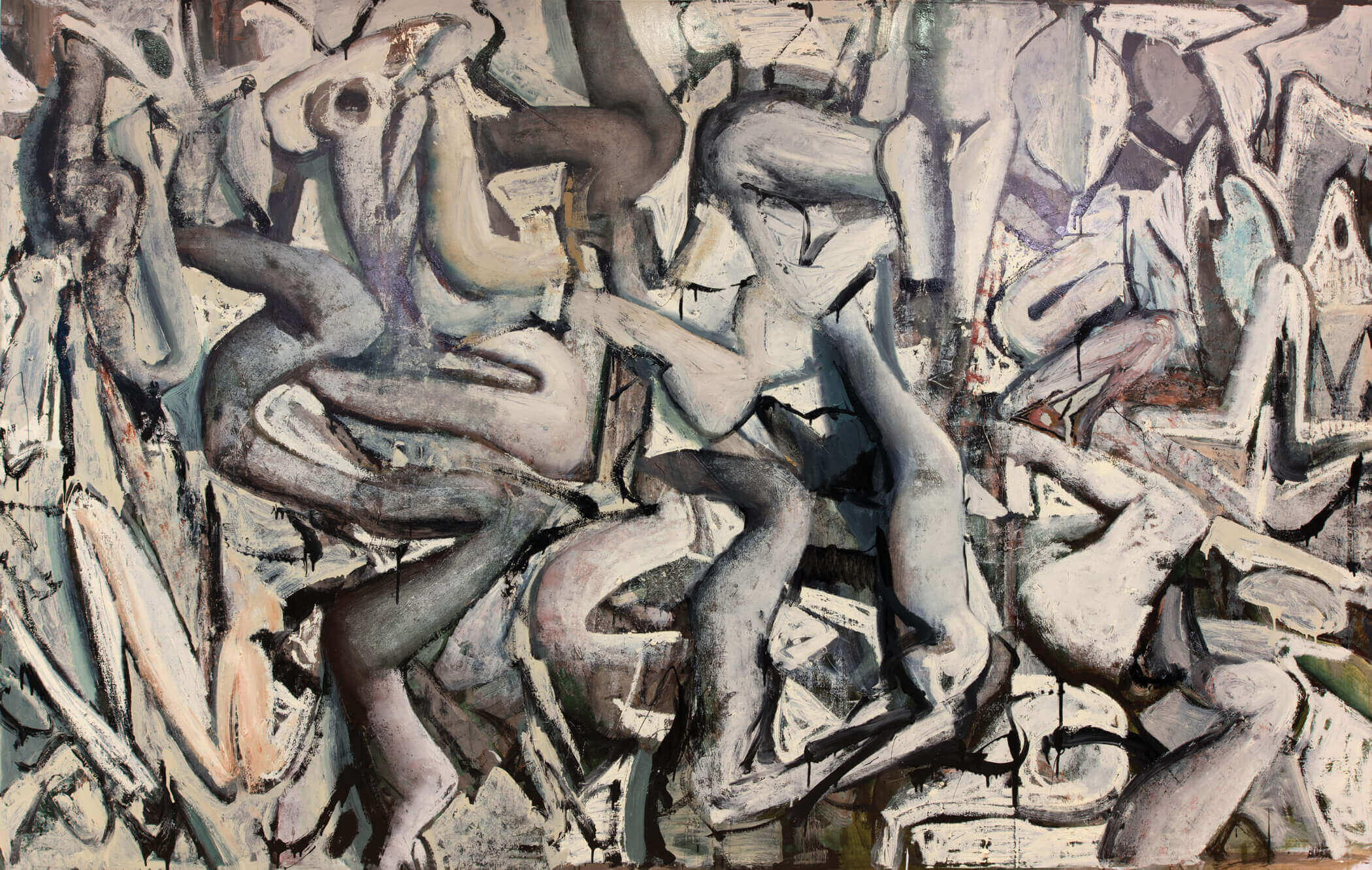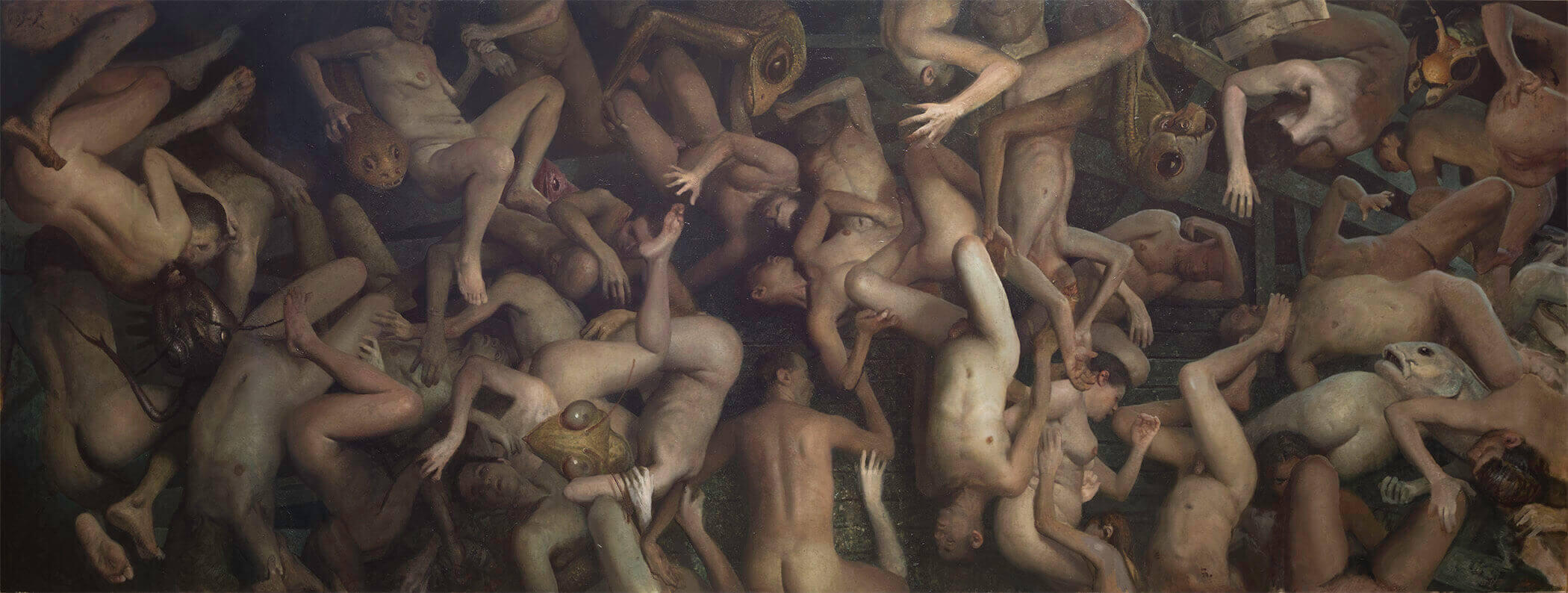Vincent Desiderio: Theseus
Marlborough Gallery
January 9 – February 3, 2018
In “Theseus” Vincent Desiderio’s virtuosity is embedded in pastose surfaces and overcast iconography that feel like excavations. Through the decades his “sensate wisdom,” the unique visualizing capabilities Alberti ascribed to painting, have persevered, balanced with a savvy contemporary approach to subject. 1
In “Big Town,” a black and white movie plays to an empty, well-worn theater in rough scumbles. Its cropped view could be a film still, a piece of a dream – or a glance the sidelong usherette in Hopper’s “New York Movie” might give. Desiderio shares Hopper’s interest in perspective 2 and in film, but the usherette’s casual introspection would be too psychological for his dramas. Like Neo Rauch albeit with more disquiet, Desiderio’s characters are existential, as though in search of an author.
Oddly echoing the hominids around the alien monolith in Kubrick’s “2001: A Space Odyssey,” the ghostly moviegoers in “Theater” (2017) could be finding their seats as the curtain opens, or anxiously clamoring over them toward the opaque shaft of light. Desiderio’s compelling take on perspective 3 might render the luminous screen a portal – a metaphor for an oculus, activating the infinite channel between eye and vanishing point.
Brunelleschi’s famed perspective demo – viewing his painting of the Baptistery in a mirror, through an eyehole – is inferred in “Duomo,” a huge panorama-shaped detail of the same architectural complex, selected by a camera’s viewfinder. Unlike the conceptual composites formed from our roving eyes, photographs (and linear perspective) freeze spatial relationships we can then timelessly examine. “Duomo” offers the pleasure of beautifully textured and modulated information, remotely sensed.
Desiderio’s human dramas range from tender to puzzling to the antisocial, as in the calmly-coordinated cannibalism of the anti-history painting “Men in Snow”. A Pasolini-like sense of opposition, 4 rather than puckishness or absurdity, stimulates reaction in the viewer: is heroic challenge about more than survival?
Desiderio’s paintings ask us to think, but “Pontormo in Hell” shows a rare playfulness. Picasso’s face is stretched along with others (probably thanks to Photoshop), including the delightfully weird and original, anamorphic skull from Holbein’s “The Ambassadors”.
Desiderio manipulates light and shadow to complex outcomes – plasticity, clarity, atmosphere, mystery, polarity, severity, etc. The frieze-like tour de force “Theseus” recalls Last Judgment scenes as well as his own more docile “Sleep” (of Kanye West fame 5). At center bottom lies a man who, Dante-like, could be dreaming up this hellish morass. We look down on writhing humans and some demons from above while standing perpendicular to the painting on the wall, disoriented until the exquisite gestures and solid modeling slowly ground us.
Despite this dire imagery, Theseus was a superhero who founded Athens, where the humanism of democracy and classical figuration began. His motley odyssey comprised adventures like visiting the underworld and killing the Minotaur, and tragedy like causing the unjust death of his son, and his father’s suicide through thoughtlessness. One can imagine how piecemeal tales of struggle, failure, courage and endurance provided entertainment and comfort, and why Greek (and other) myths would be repeated, embellished, and eventually remembered into quasi-historical epic poetry. Might the paintings in this show be fragments of an untold story?
Desiderio was also drawn to the subject’s philosophical quandary: “…as Theseus traveled, the boat rotted, and by the time he got back to port, every part had been replaced, so … What is the identifying nature of the ship?… Roland Barthes equates literary criticism of a work with the barque of Theseus in regard to the original work…” 6 Desiderio traces this process of replacement both in moving around and repainting figures, and in engaging opposing “narrativities,” as he puts it, that Metamodernism now sees dialetically.
“Theseus II” and “Theseus III” are AbEx compositions, their parts refurbished as it were into the elaborated “Theseus”. What Desiderio calls the contrary “technical narratives” 7 of this series recapitulate 20th c. painting’s schism. Even though most illusionistic paintings start as rough speculations, during the Cold War the gap between abstraction and tradition-based figuration was overly politicized, estranging them.
“Bathers” is a wolf in sheep’s clothing. Gracefully colored, bucolic harmony gives way to things falling apart the closer one looks. Too late to the bacchanal, all will fall before they are cleansed. Yet, like the Buddha insinuated below, beneath Desiderio’s timely cynicism lies hope, if not romanticism – a perhaps Neo-Symbolist nostalgia for, or Post-Pomo confidence in, figurative painting’s purpose.
Notes
1 Alberti, L.B. – p. 6, https://paduan.dk/Kunsthistorie%202008/Tekster/Alberti%20-%20On%20Painting.pdf
2 Strand, M., “Hopper”
3 Desiderio, V. – p. 60, “Toward an Allegorization of Method” – http://www.rizzoliusa.com/book.php?isbn=9780847843756
4 Rich, N. – http://www.nybooks.com/articles/2007/09/27/the-passion-of-pasolini/
5 http://www.independent.co.uk/arts-entertainment/music/news/kanye-west-famous-music-video-painter-who-inspired-it-lambastes-lena-dunhams-critique-making-art-a7110666.html https://www.youtube.com/watch?v=qlZCbEbQA5E
6 Maidman, D. http://www.drailedmag.com/2017/09/28/the-barque-of-theseus-an-interview-with-vincent-desiderio/
7 Seed. J. – https://www.huffingtonpost.com/john-seed/vincent-desiderio-painter_b_4671612.html

